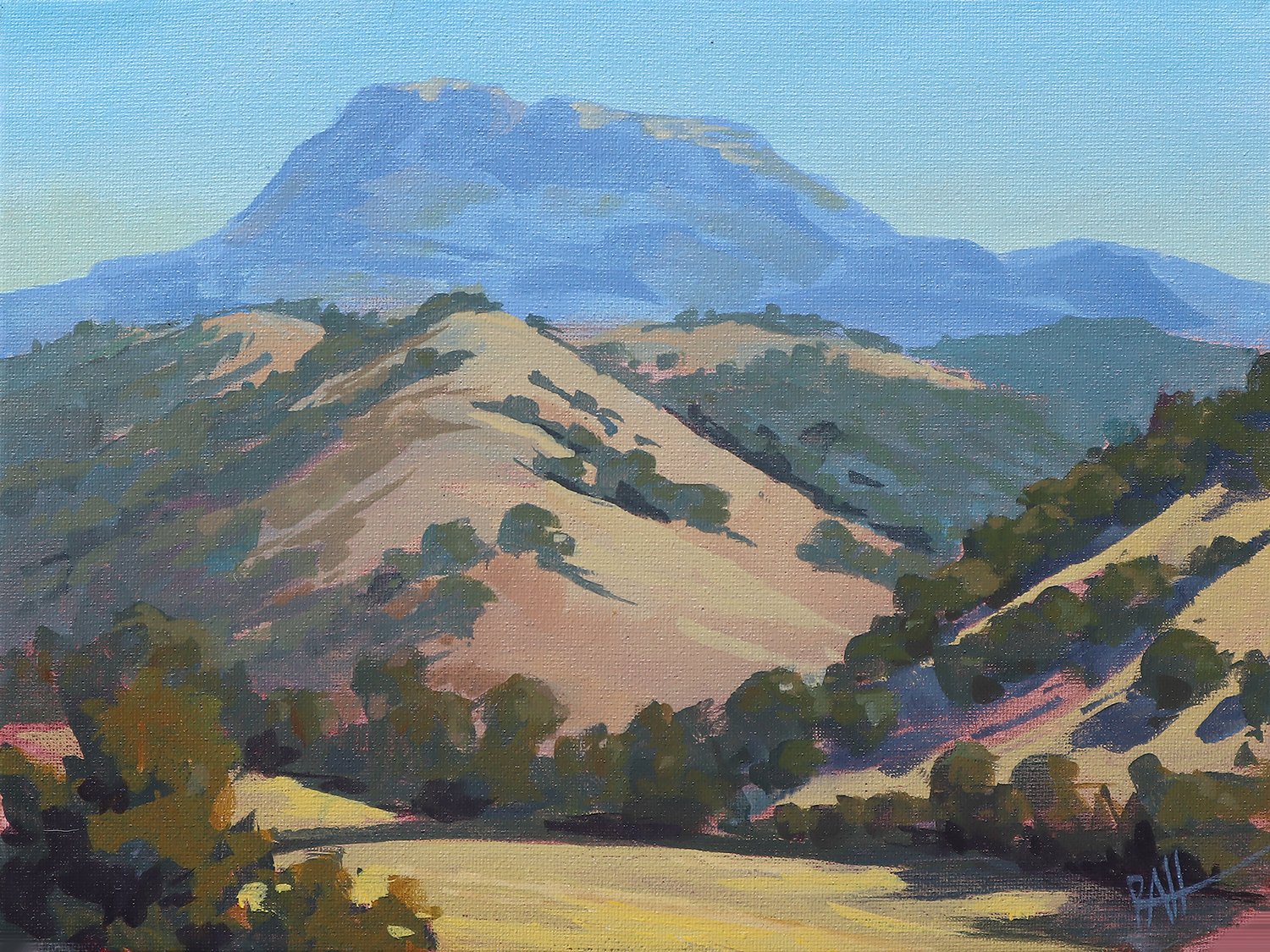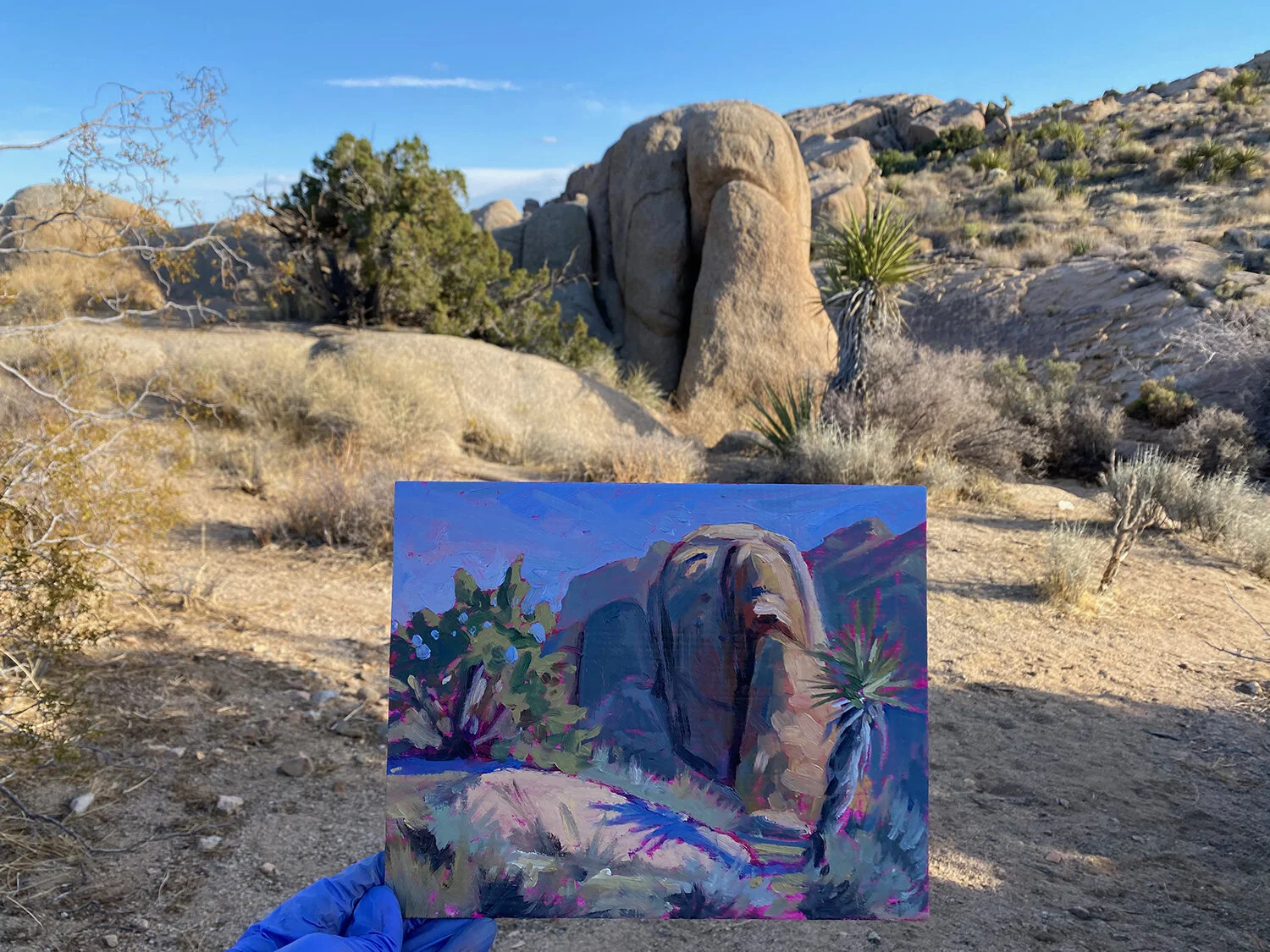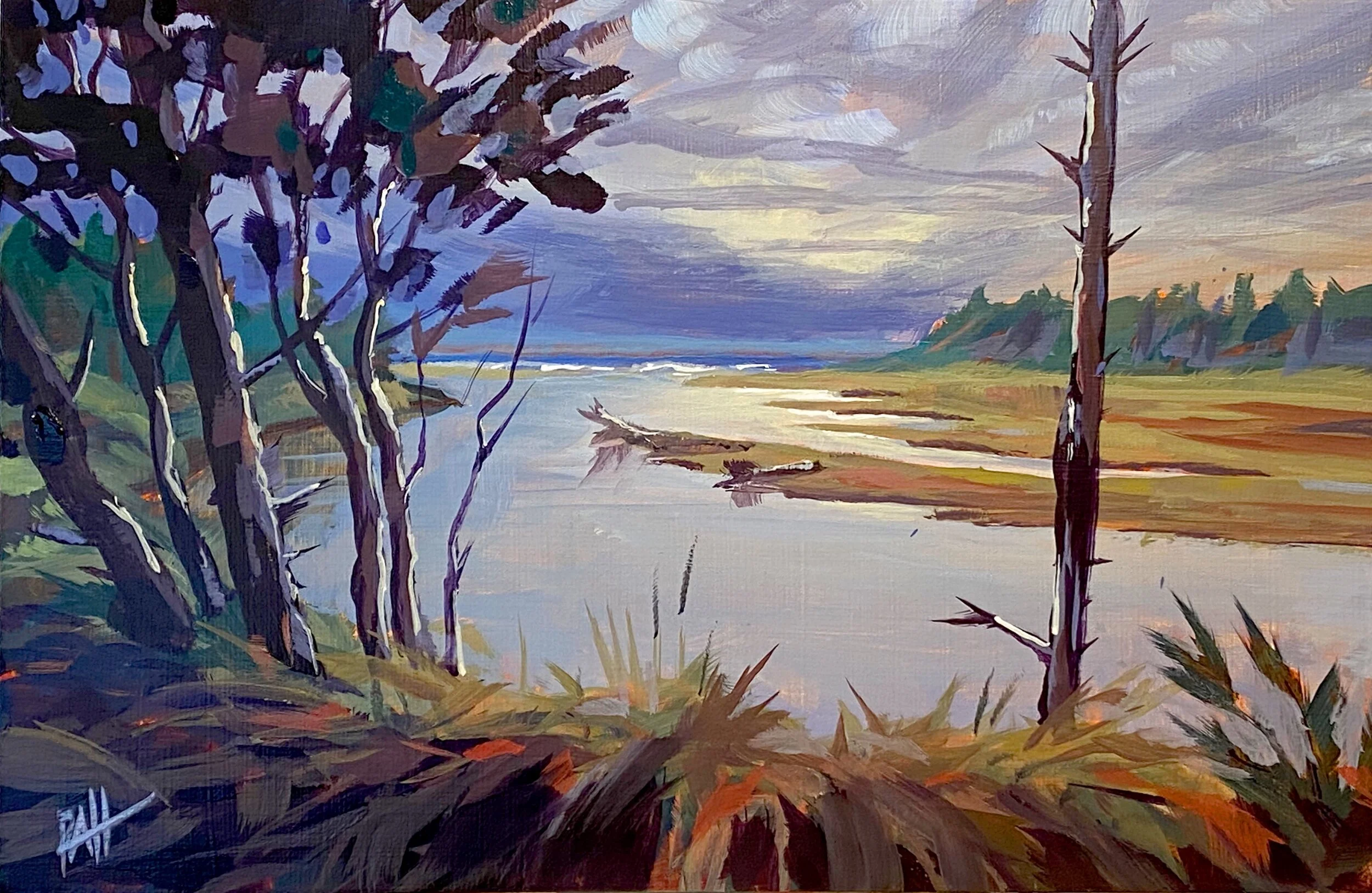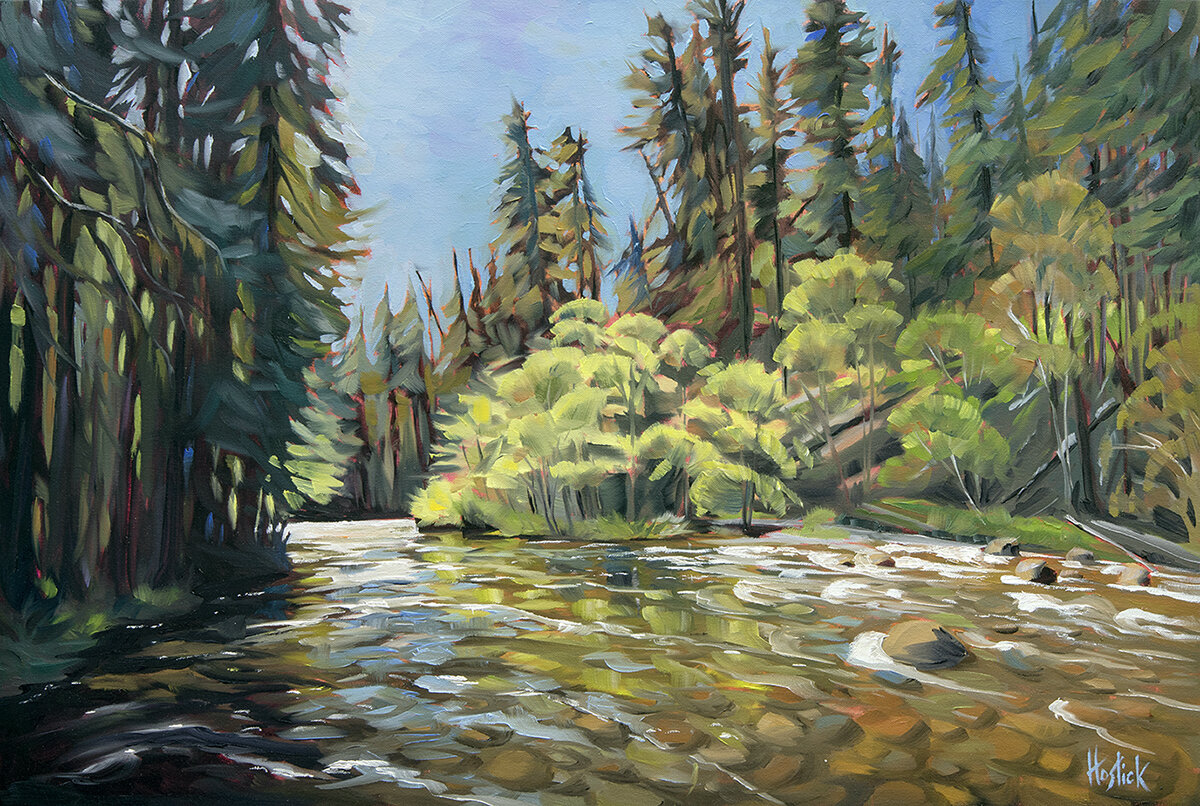Back in August, during the Umpqua Valley Plein Air event, I found myself looking for a place to camp for the night along the North Umpqua River. I finally came across a little campground tucked down off a gravel road near Canton Creek. It was mid-week, and to my surprise I found every site except one marked as reserved. Strange thing, though: the whole place was deserted. Where was everyone?
All afternoon I kept expecting people to roll in and unload piles of gear. Soon, kids would be racing up and down the road on bikes. As evening came and went, however, I found myself completely alone in a fully booked campground.
Sure, stranger things have happened. But it was still a bit puzzling. I could only assume people must have booked the sites and reconsidered. But a whole campground? My other theory, which occurred to me in the wee hours of the night, is that everyone but me knew the area to be swarming with cougars.
My schedule only allowed me three days to paint for the week-long event, so I started my day early. After checking for cougar tracks, I headed down to the wild, rushing waters of Steamboat Creek to paint the morning light on the water. Around lunchtime I painted a quiet pool with a rocky island, and in the evening I headed over to the Steamboat Inn to paint the falls and dramatic hills.
The other days passed in kind: up early, paint all day, find a place to camp for the night. The aim of the Umpqua Plein Air event is to have up to three of your best works from the week – all painted on-location – ready to hang by Friday evening. The show stays up for a couple months at the Umpqua Valley Arts’ beautiful gallery in Roseburg, Oregon. This year’s show just wrapped up at the end of October (yep, I’m a little late on the blog post, too).
The wonderfully organized event offers opportunities for prize money and purchase awards, so there’s a mild air of friendly competition. If you’re a working artist like me, you have an interest in giving it your best effort.
Many plein air artists like to paint together, which is why the event organizers provide a handy guide to popular spots. I love the idea of being social while painting, but my taste in subject matter often leads me to explore off the beaten path. My plan was to head farther up the North Umpqa River and paint wild creeks and waterfalls. Besides, since the big fire of 2020, I knew things had changed and I wanted to see for myself.
This approach has its risks. Sometimes it’s hard to find a subject in good light, or access may be more difficult than I imagined. Other times, as I found along the North Umpqua, parts of the landscape have changed so much that my expectations no longer match reality.
Whatever the case, I was reminded that plein air painting is demanding work. By the end of the week, I was ready for a break. I have great respect for artists who paint plein air with focus and intensity all year long.
That said, it’s also instructive work. Painting out in the elements is an education in change and nuance – light, wind, temperature, weather. Everything changes, and the artist needs to be prepared for it. A beautiful reflection in a lake, for example, can be erased in one minute by the slightest breeze.
One thing I learned is that by quickly anchoring the qualities you’re after – shadows, let’s say – in a sketch or quick block-in, you can somewhat insure your work against the dreaded spiral of “chasing light.” Chasing light means relying solely on painting what you see, which in the landscape tends to change over time. As a result, the later stages of the painting may not match the early stages, and the moment is lost.
Portrait painters of yore, to avoid this problem, would position a subject indoors in the same location at the same window at the same time of day. North-facing windows were preferred to avoid strong sunlight. The artist only had a a couple hours to paint each day while the light conditions were consistent with previous sittings. That’s also probably about as long as any subject would be willing to sit.
Painting a landscape is like painting a portrait of a person who is infinitely patient but dances around and makes faces.
I’m also learning that plein air painting is as much imagination as inspiration. As with all subjects, the artist is free to modify the landscape at will. In fact, in most cases, that’s one key to a compelling composition. The landscape can be messy and often fails to offer up the perfect set of elements in a pleasing arrangement. Making changes to the scene is sometimes called “editing,” but as the degree of editing increases, the landscape becomes more imaginary. After all, to say something about a place is more than representation. It’s expression.
Artists who have developed a deep vocabulary of known forms and expressions – that is, they’ve learned how to reliably paint certain elements in the landscape, for example a backlit tree – have great freedom to use an existing scene as more of a framework. Rather than taking the scene literally, the imaginative artist can draw on what is already known.
Back at the Umpqua Plein Air event, one of my favorite works from the week is Scott Mountain (title image). I came upon the scene while driving back to drop off my final paintings on Friday afternoon. You can check out this painting and other plein air works here.
On the last evening I had an opportunity to camp out at the Growing Miracles Lavener Farm. The farm occupies a beautiful stretch of land along the North Umpqua River and the generous owners let a few artists stay there as part of the UVA event. Stretching my legs after a day of painting, I bushwhacked down a steep bank to where the farm’s owners said I could get a good look at the river. As the sun drifted down towards the western horizon, I slogged across a couple of channels in the ledge rock and came upon a lovely stretch of river flanked by grasses and tall blooms of purple loosestrife.
Unlike the painters of yore, I had an iPhone in my pocket, so I took some reference photos. As a result, I recently spent a cold November day in my studio painting August sunshine on water.
Speaking of November, as the holidays approach I’ve been busy proofing a new set of limited-edition prints that will be available through my web site (I handle all limited edition prints personally through local artisan printers). Most of these are new works from 2022, and they’re looking great in print! Look for an email soon with more details.
Beyond that, I’m back in the studio full time with five solid months of painting ahead of me. If all goes well, I’ll have a new body of work for 2023. I’m super excited about painting a variety of Oregon, Washington, Canadian Rockies subjects.
This may sound odd, but I’m also curious how my work will evolve this year. I have thoughts and intentions, but I never really know what will emerge. Sounds a bit like life, doesn’t it?
I hope you’re well and enjoying a lovely fall season!

































